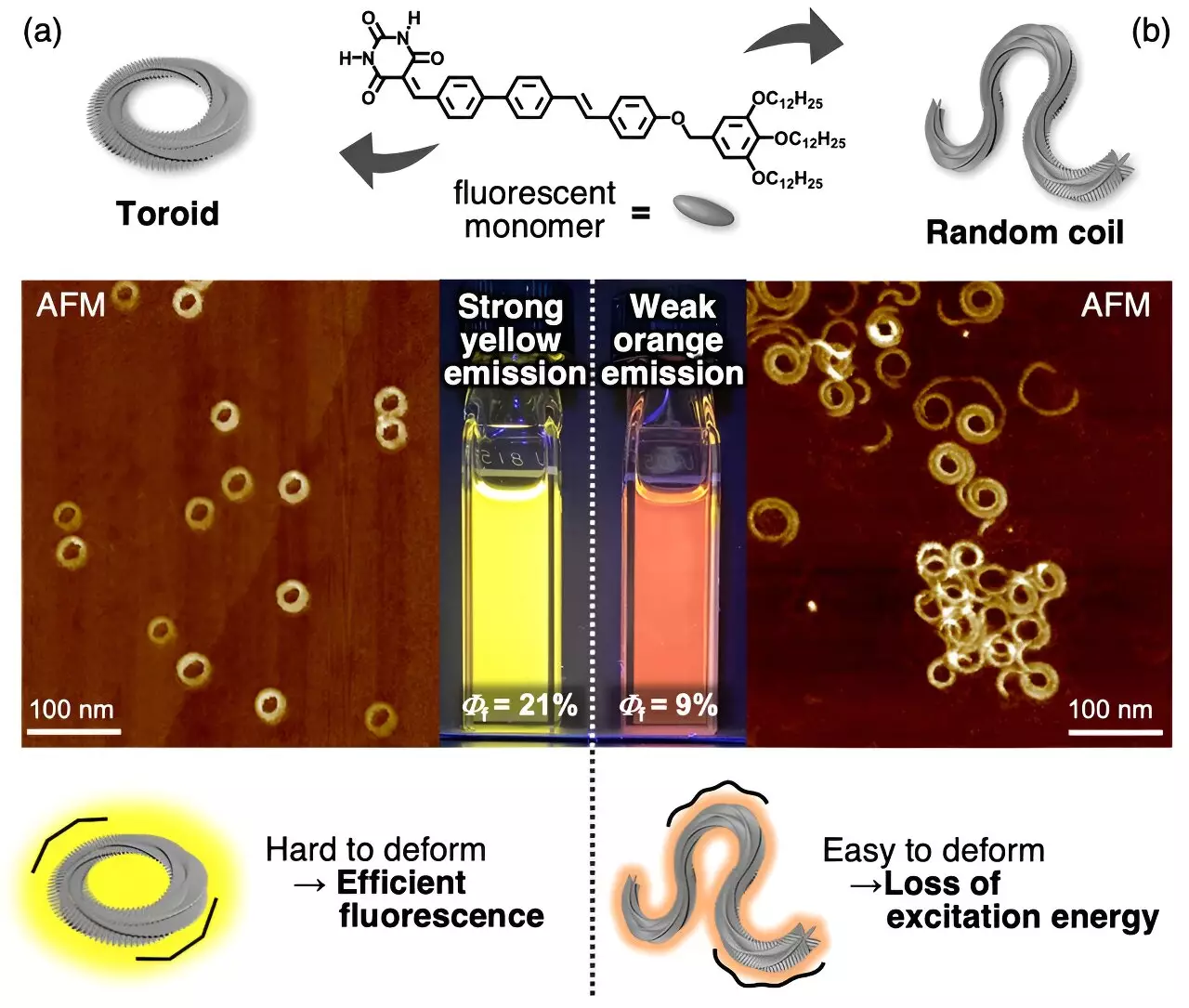Supramolecular chemistry explores the self-assembly state of molecules and its influence on their tangible properties. By understanding and controlling self-assembled structures, scientists can design materials with desired characteristics such as charge transport capability and fluorescence wavelength. Researchers have long sought to unravel how molecular organization affects the properties of supramolecular assemblies at the nano and mesoscopic scales. However, challenges arise when studying supramolecular polymer assemblies derived from the same monomer, as dynamic structural changes and limited control over self-assemblies often hinder progress.
A recent study, led by Prof. Shiki Yagai from Chiba University, delved into the properties of one-dimensional mesoscale supramolecular assemblies composed of the same luminescent molecule. The study focused on two different structures: one with molecules arranged in a closed circular pattern and the other without. Surprisingly, the two structures displayed contrasting properties. The first author of the study, doctoral course student Sho Takahashi, collaborated with Prof. Martin Vacha from the Tokyo Institute of Technology and Dr. Hikaru Sotome from Osaka University.
Prof. Yagai explained the allure of circular structures, stating, “The geometrical beauty of a circular structure, which has no termini and no corners, has fascinated people.” Chemists have strived to synthesize giant cyclic molecules using various methods to achieve both aesthetically pleasing structures and elegant synthesis processes. He cited the light-harvesting antenna organ of purple photosynthetic bacteria as an excellent example of nature harnessing the functional beauty of circular structures. The circular framework facilitates efficient light collection and excitation energy transfer through the arrangement of chlorophyll dyes.
In this study, the research team synthesized luminescent molecules with their own molecular design and achieved the self-assembly of one-dimensional π-conjugated molecular aggregates. The resulting mixture consisted of two structures: terminus-free cyclic structures (toroids) and randomly coiled structures. This mixture exhibited low-energy and low-intensity luminescence. To separate the two structures, the researchers employed a novel dialysis technique that capitalized on their difference in kinetic stability. Post-separation, it became evident that the terminus-free closed toroidal structure exhibited higher energy and more efficient luminescence compared to random coils.
Intrigued by the different fluorescence properties of the two structures, the team conducted ultrafast laser spectroscopy to uncover the underlying mechanisms. The results revealed that random coils with termini experienced excitation energy loss due to defects introduced by fluctuations in the solution. In contrast, toroids were less susceptible to deformation and maintained fluorescence without energy loss. Furthermore, when the mixed solution contained both toroids and random coils, the excitation energy transferred from the toroid to the random coil due to the agglomeration of both assemblies. Consequently, only the luminescence from the random coil structure was observed.
This study establishes the control of material morphology at the mesoscale as a potential guideline for designing functional materials. It emphasizes the importance of purifying assemblies before analyzing their photophysical properties, particularly in cases of supramolecular polymorphism like toroids and random coils. Failure to separate these structures may yield biased results that do not accurately reflect their distinct properties, due to energy transfer between them. The researchers anticipate that these insights will inspire the development of high-performance flexible devices utilizing cyclic molecular assemblies.
This research sheds light on how molecular organization profoundly impacts the properties of supramolecular assemblies. By investigating the fluorescence properties of two structurally diverse mesoscale supramolecular assemblies, the study revealed the advantages of terminus-free cyclic structures over random coils. The findings pave the way for advancements in the design of functional materials, such as improved solar cell devices and light-emitting devices. With the correlation between structural beauty and functional beauty discovered in meso-scale molecular assemblies, these insights carry the potential to enrich people’s lives through enhanced technological applications.


Leave a Reply